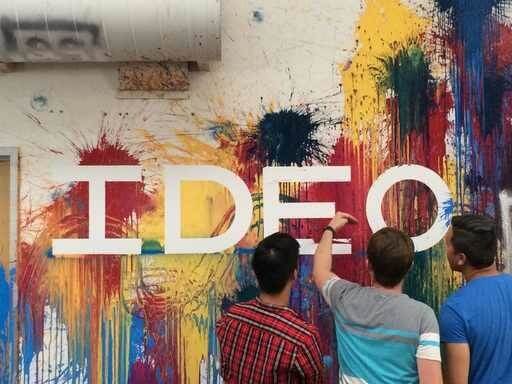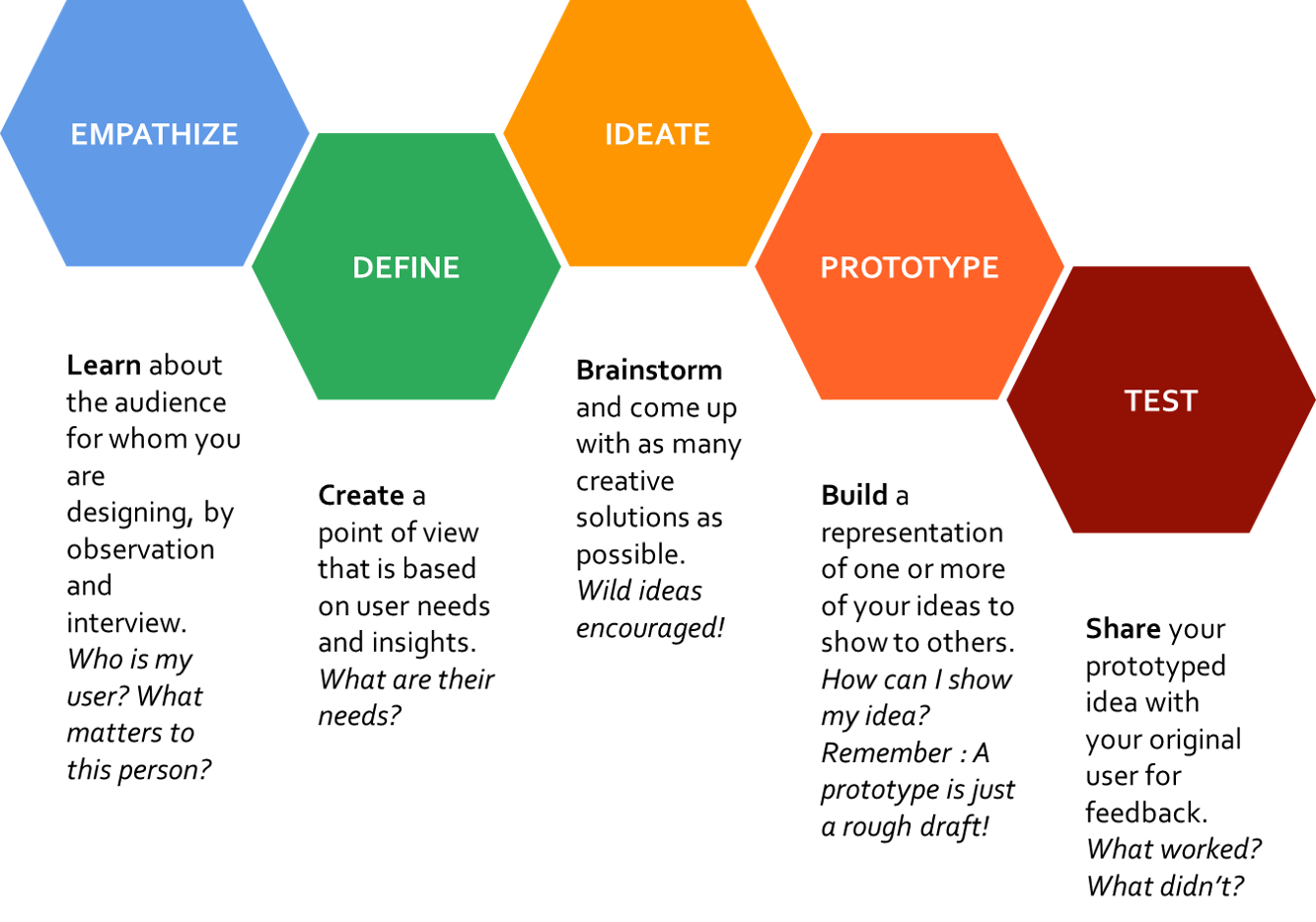Table Of Content

Notice the many parallels between Laura’s advice for designers on agile teams and the mindsets of design thinking. This model balances expansive thinking with focused execution to ensure that design solutions are both creative and practical. It underscores the importance of understanding the problem thoroughly and carefully crafting the solution, making it a staple in many design and innovation processes. The methodology emphasizes collaboration and a multidisciplinary approach throughout each phase to ensure solutions are innovative and deeply rooted in real human needs and contexts. In the “Inspire” phase, the team focuses on understanding users’ needs, behaviors, and motivations.
Share Knowledge, Get Respect!
Airbnb’s innovative business model and user-centric design have disrupted the hospitality industry. This phase brings the idea into the world through the creation of physical models or digital wireframes and prototypes. By visualizing solutions on paper, teams can better identify potential issues or determine if the solution properly meets user needs. These goals are extremely important to the success of any product or service.
Tools and Insights for Enhancing the Lives of Older Adults
To think like a designer requires dreaming up wild ideas, taking time to tinker and test, and being willing to fail early and often. The designer's mindset embraces empathy, optimism, iteration, creativity, and ambiguity. And most critically, design thinking keeps people at the center of every process. A human-centered designer knows that as long as you stay focused on the people you're designing for—and listen to them directly—you can arrive at optimal solutions that meet their needs. At IDEO, we are a community of designers who naturally share a mindset due to our profession. Our teams include people who've trained in applied fields such as industrial design, environmental architecture, graphic design, and engineering; as well as people from law, psychology, anthropology, and many other areas.
Design Thinking for Leading and Learning
The American Institution of Graphic Arts (AIGA) states the value of modern design practice comes from designers’ unique blend of head, heart and hand. For example, design thinking participants wear many hats during the process and rely on their heads to solve complex problems. In the early stages, they also use their hearts to empathize and understand human needs and emotions.
With this solid background, you and your team members can start to look at the problem from different perspectives and ideate innovative solutions to your problem statement. The first stage of the design thinking process focuses on user-centric research. You want to gain an empathic understanding of the problem you are trying to solve. Consult experts to find out more about the area of concern and conduct observations to engage and empathize with your users. You may also want to immerse yourself in your users’ physical environment to gain a deeper, personal understanding of the issues involved—as well as their experiences and motivations. Empathy is crucial to problem solving and a human-centered design process as it allows design thinkers to set aside their own assumptions about the world and gain real insight into users and their needs.
Use Prototypes
However, design thinking is not an exclusive property of designers—all great innovators in literature, art, music, science, engineering, and business have practiced it. The design thinking process should not be seen as a concrete and inflexible approach to design; the component stages identified should serve as a guide to the activities you carry out. The stages might be switched, conducted concurrently or repeated several times to gain the most informative insights about your users, expand the solution space and hone in on innovative solutions. Designers or evaluators rigorously test the complete product using the best solutions identified in the Prototype stage. This is the final stage of the five-stage model; however, in an iterative process such as design thinking, the results generated are often used to redefine one or more further problems.
Common Elements of Design Thinking Frameworks
In this course, you learn how to use creativity to solve difficult business and organizational problems and come up with bold, new ideas. You follow a model that asks four key questions to prompt design thinking and learn from real-life organizations as examples. You can also take other courses in the Leading the Modern Day Business Specialization. We’ve learned a lot over the years, and we’d like to share our insights. We’ve seen design thinking transform lives and organizations, and on occasion we’ve seen it fall short when approached superficially, or without a solid foundation of study. Design thinking takes practice; and as a community of designers, entrepreneurs, engineers, teachers, researchers, and more, we’ve followed the journey to mastery, and developed maps that can guide others.
Generate ideas

The DeepDive™ technique was developed by IDEO as a way to rapidly immerse a group into a situation where they can effectively problem-solve and generate ideas. They expressed this variant of the design thinking process live on ABC Nightline back in the late ’90s. The earliest versions of the design thinking process still reflected the traditional design process. As design thinking evolved, however, deeper empathy, more collaboration and a multidisciplinary approach were thrown into the mix.
Once the team identifies one or more solutions, they determine whether the organization can implement them. In theory, any solution is feasible if the organization has infinite resources and time to develop the solution. However, given the team’s current (or future resources), the team evaluates if the solution is worth pursuing. The team may iterate on the solution to make it more feasible or plan to increase its resources (say, hire more people or acquire specialized machinery). Don Norman, a pioneer of user experience design, explains why the designer’s way of thinking is so powerful when it comes to such complex problems.
It can feel quite chaotic at first, if you’re not used to it—however, if done correctly, it can result in emergent solutions that are desirable, feasible and viable. Design thinking at its best happens at companies that leverage user insight to encourage customers to behave the way customers want, Schrage told Built In. Obviously one of the easiest solutions would be to set up some rules and regulations. The room owners may be asked to upload better-quality pictures on the website. One of the reasons for this not working is that the owners may not be an expert in photography.
IDEO's CEO, Sandy Speicher, Asks: What Is an Office Even For Now? - HBR.org Daily
IDEO's CEO, Sandy Speicher, Asks: What Is an Office Even For Now?.
Posted: Fri, 17 Dec 2021 08:00:00 GMT [source]
IBM has integrated Design Thinking into its approach to developing enterprise software and solutions. IBM Design Thinking emphasizes collaboration, rapid prototyping, and user feedback to create innovative solutions that address the needs of businesses and users. By applying Design Thinking principles, IBM has transformed its approach to software development and created more user-centric products and services. We’ve outlined a direct and linear design thinking process here, in which one stage seemingly leads to the next with a logical conclusion at user testing.

In short order, a community of designers, entrepreneurs, and social sector innovators embraced it, buying and downloading over 150,000 copies. OpenIDEO is an open innovation platform where people from all corners of the world collaboratively tackle some of the toughest global issues through launching Challenges, programs, and other tailored experiences. For human-centered designers, there is nothing more valuable than discovering what matters to people—what triggers frustration and what provides ease, what brings grief and what sparks joy. 3 Principles to design AI creative tools Gen Zs will actually want to use. It’s moving from a nascent practice to an established one, and with that comes interest and critique. As a leading and committed practitioner of design thinking, IDEO has a stake in this conversation—and a responsibility to contextualize its value in the present moment and, importantly, in the future.
HCD has a much narrower focus and aims to create and improve products. Systems thinking looks at the larger picture and aims to change entire systems. Design consultancy IDEO’s designkit is an excellent repository of design thinking tools and case studies. Aims to deliver that solution and continuously iterate on the live product.
These stages are modular and do not have to occur in sequence — or even at all — and tend to work best at early stages of product development. The second question that we need to ask is regarding the customers’ needs. It is imperative that we understand that needs may not be manifested easily. Many companies run customer surveys to understand the explicit needs of the customer. Leading firms understand the value of going beyond the explicitly specified needs. Pin rightly said by Henry Ford that if he would have asked his customers that what did they want.

No comments:
Post a Comment